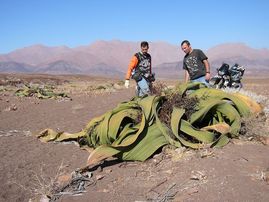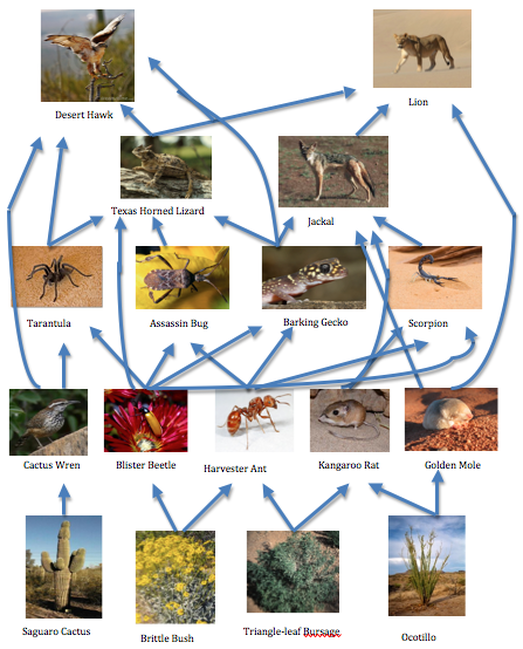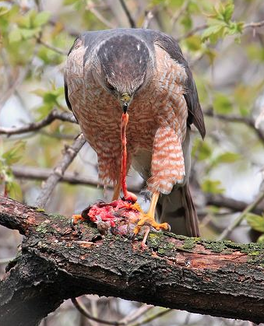Animals and Plants in the namib desert
Producers
|
Keystone species
A keystone species is a species which, while not necessarily the most abundant in an environment, plays a key role within the environment. In the Namib desert, the Camel Thorn tree fills one of the roles as a keystone species. Due to the lack of trees overall in this desert, the presence of these plants is beneficial to multiple organisms. Shade and shelter for animals is provided, as an escape from constant, intense sunlight. It is also available for bird nesting. However, a unique role that classifies this as a keystone species is the Camel Thorn's facilitation of seed dispersal. Plant life is not abundant in the desert biome, so any aid in the spread of seeds is beneficial.
Predator-Prey relationships
A predator-prey relationship in the Namib desert is exemplified between the black backed jackal and Cape fur seal pups by the coast. The jackals often travel in large groups while on hunting missions, making it nearly impossible for the pups to escape when unprotected, which they often are. Only the pup's mother is there to guard all of her offspring, resulting in an easier hunt for the group of predators. Because the black backed jackal has a strong reliance on readily available food sources, it is not limited by the pups as food, except partially in coastal packs. The pups are also limited by predators in the form of hyenas. Therefore, if the jackals were, for some reason, to stop hunting the pups, or if coastal jackal population decreased, the pups would most likely go through somewhat of a population increase.
Other than the seal pups, hyenas of the Namib desert also prey on the gemsbok. Particularly the brown hyena, which is more prominent in this area, is known for preying on this animal. Though the gemsbok is a fast creature, it also uses its large, curled horns to protect itself. This could be the reason that the calves, underdeveloped and less equipped, are more often chosen by the hyenas as prey, accounting for the gemsbok species' high mortality rate at a young age. This makes the gemsbok a Type III species.
Other than the seal pups, hyenas of the Namib desert also prey on the gemsbok. Particularly the brown hyena, which is more prominent in this area, is known for preying on this animal. Though the gemsbok is a fast creature, it also uses its large, curled horns to protect itself. This could be the reason that the calves, underdeveloped and less equipped, are more often chosen by the hyenas as prey, accounting for the gemsbok species' high mortality rate at a young age. This makes the gemsbok a Type III species.
Trophic efficiency pyramid
Food web
Role of predation
Population control is an attempt to limit the growth in numbers of a population. Many factors can affect and control population, but in the Namib Desert, predation plays a huge role. One example of this is seen in the jackal population. Jackals are carnivorous animals and they feed on many animals such as Barking Geckos, Golden Moles, Kangaroo Rats, and Scorpion. This single predator is also a huge food source for the Namib Desert Lion. If the population of the Jackal somehow decreases, and predation from this species decreases as a result, the original prey population will increase due to the lack of predation and organisms lower on the food chain such as certain types of plants will decrease. Another affect of the loss of this predator would lower the lion population drastically. The jackals provide a huge food source for the lions so the loss of this predator would take a great toll on the lion population. We see another example of population control through predation with the Desert Hawk. The Desert Hawk is one of the top predators in this ecosystem because it has no predators. It controls the population of many species including that of the Tarantula, Lizards, and Cactus Wren. By preying on certain animals, the Desert Hawk can keep the prey’s population down, in turn leading to a stable amount of primary producers or consumers that is preyed upon by the Hawk’s own prey. If the hawk population were to increase or decrease at any time, this balance would be broken and the population would not be controlled.



